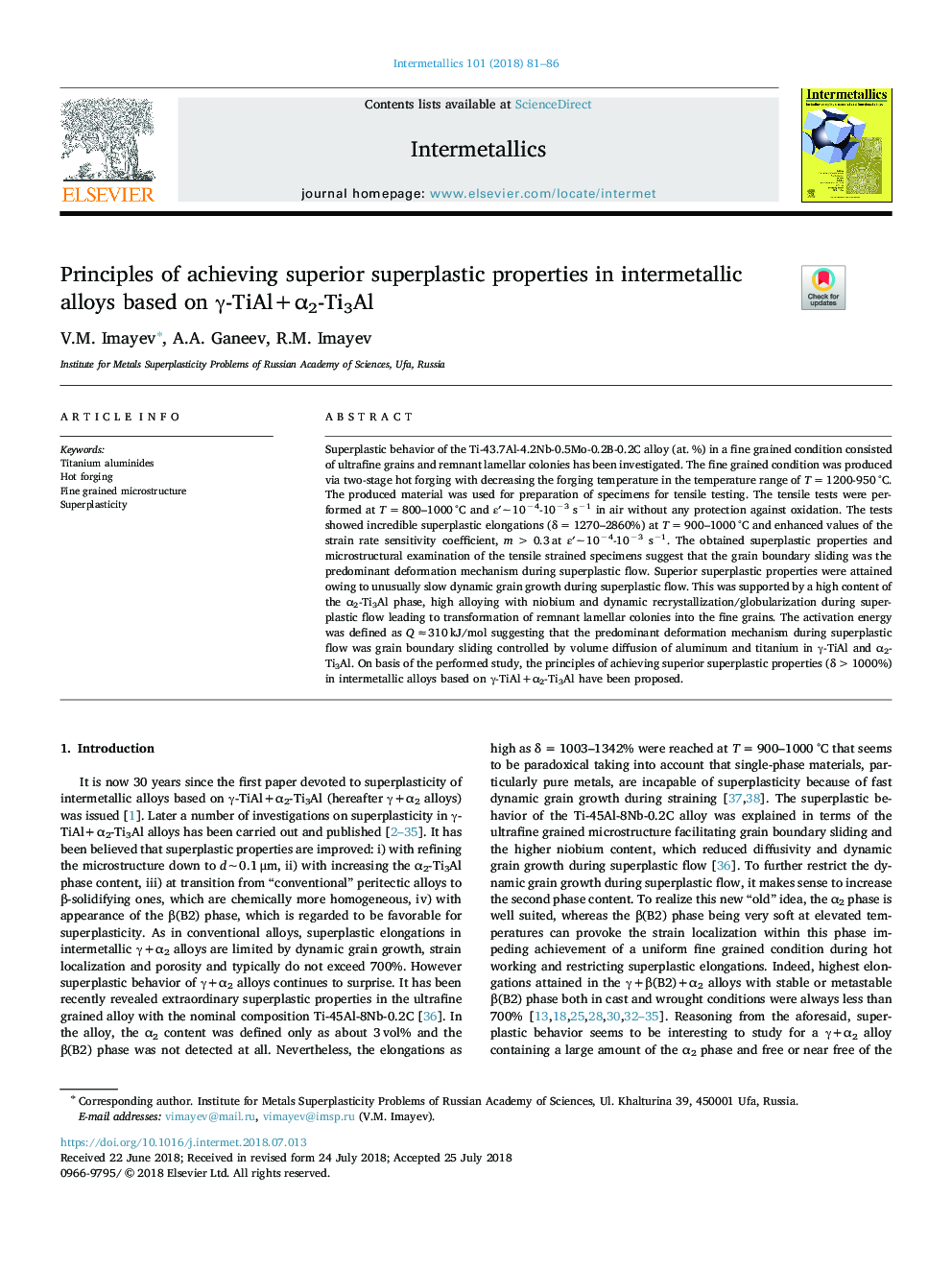| Article ID | Journal | Published Year | Pages | File Type |
|---|---|---|---|---|
| 7988199 | Intermetallics | 2018 | 6 Pages |
Abstract
Superplastic behavior of the Ti-43.7Al-4.2Nb-0.5Mo-0.2B-0.2C alloy (at. %) in a fine grained condition consisted of ultrafine grains and remnant lamellar colonies has been investigated. The fine grained condition was produced via two-stage hot forging with decreasing the forging temperature in the temperature range of Tâ¯=â¯1200-950â¯Â°C. The produced material was used for preparation of specimens for tensile testing. The tensile tests were performed at Tâ¯=â¯800-1000â¯Â°C and εâ²â¼10â4-10â3 sâ1 in air without any protection against oxidation. The tests showed incredible superplastic elongations (δâ¯=â¯1270-2860%) at Tâ¯=â¯900-1000â¯Â°C and enhanced values of the strain rate sensitivity coefficient, mâ¯>â¯0.3â¯at εâ²â¼10â4-10â3 sâ1. The obtained superplastic properties and microstructural examination of the tensile strained specimens suggest that the grain boundary sliding was the predominant deformation mechanism during superplastic flow. Superior superplastic properties were attained owing to unusually slow dynamic grain growth during superplastic flow. This was supported by a high content of the α2-Ti3Al phase, high alloying with niobium and dynamic recrystallization/globularization during superplastic flow leading to transformation of remnant lamellar colonies into the fine grains. The activation energy was defined as Qâ¯â310â¯kJ/mol suggesting that the predominant deformation mechanism during superplastic flow was grain boundary sliding controlled by volume diffusion of aluminum and titanium in γ-TiAl and α2-Ti3Al. On basis of the performed study, the principles of achieving superior superplastic properties (δ>1000%) in intermetallic alloys based on γ-TiAl+α2-Ti3Al have been proposed.
Related Topics
Physical Sciences and Engineering
Materials Science
Metals and Alloys
Authors
V.M. Imayev, A.A. Ganeev, R.M. Imayev,
